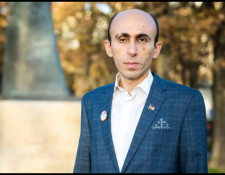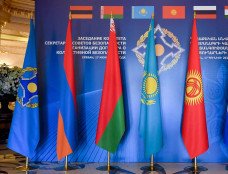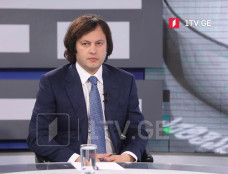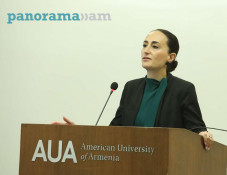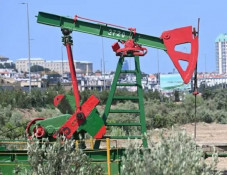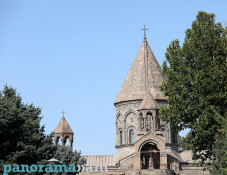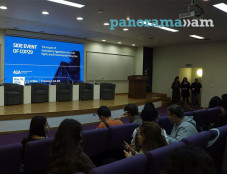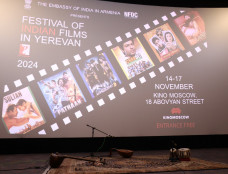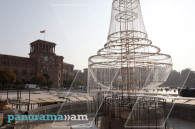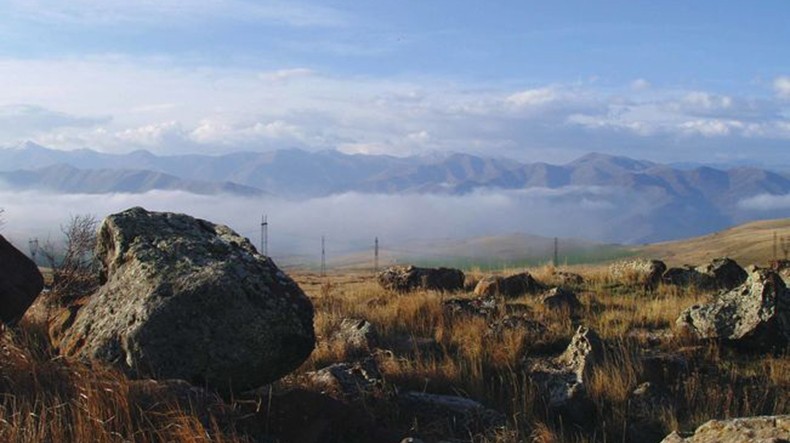
Catalan newspaper: Armenia – magic country with original alphabet, architecture and natural wonders
Few are so magical places as Armenia, a small post-Soviet republic in the Caucasus mountains, on the crossroads of Europe and Asia, Catalan traveller journalist Xavier Moret writes in his article ‘In the shadows of Ararat' published on the website of Catalan newspaper ARA.
Moret writes that the history of Armenia is marked tragically with the genocide committed by the Ottoman Empire in 1915, which exterminated 1,5 million Armenians and forced more into exile. Today, the population of Armenia is about 3 million, while there are 8 million Armenians living in the diaspora. The Catalan journalist’s first visit to Armenia years ago started with an acquaintance with Armenians from the diaspora. He met Armenians in Jerusalem, Beirut, Istanbul, Argentina, Columbia, France, California, and also in his native Barcelona.
The Armenians of the diaspora told him enthusiastically about the millennia-long history and culture of that country, which once stretched from the Caspian to the Black Sea, from the Caucasus to Jerusalem. “Visiting the country, you juxtapose the ideal Armenia, known from books and stories of the Armenians of the diaspora, and the real Armenia, an economic-crisis-hit mountainous land abounding in natural wonders and monasteries, standing as reminders that the country was the first to adopt Christianity in 301. Before the plane landed in the Zvartnots Airport, I saw tears running down from the eyes of many diaspora Armenians, who visited Armenia for the first time, as they saw Ararat. After all, the Armenians usually do not fail to have a picture of Ararat at their homes, a 5166 metre high mountain, on which, according to the Genesis, Noah’s Ark landed after the flood,” Moret writes.
The Armenian friends told him that their national identity bases on an original alphabet and manuscripts translated by priests centuries ago. For Armenia, it was not easy to preserve its history and culture, whose symbol is Matenadaran, the museum of manuscripts.
The diaspora has been sending huge sums of money over the recent years to save the ideal Armenia. The funds are spent on recovery works. Cascade is an architectural monument with an art museum inside, built thanks to the financing of a North-American millionaire of Armenian descent, Gerard Cafesjian. The house of the most famous Armenian from diaspora, Charles Aznavour, is near Cascade. Born in Paris with the surname Aznavourian, he is the author of songs about the Genocide, such as Ils sont tombés (‘They Fell’), Moret writes.
Many people gather at the monument to the Armenian Genocide every April 24, the Armenian Genocide Remembrance Day. The monument stands as a symbol of the history of a nation that does not wish to forget that tragedy and struggles for the recognition of the Genocide, which is attempted to be kept silent on to this day. The Basque and Catalan parliaments have certainly recognised it, still the Spanish government does not want to take the step, which could help relieve the pain and heal the open wound,” the author highlights.
Khor Virap Monastery is located near Yerevan and, according to Moret, is the most photographed in Armenia. Standing in the territory of Turkey behind closed borders, the impressive snow-capped Ararat is in its background and personifies the essence of that land as a symbol of survival throughout centuries.
A visit to Etchmiadzin, which Moret calls ‘the Vatican of the Armenians,’ enables one to realise the role the Armenian church has played in preserving the national identity during the 70 years of the Soviet rule. There are many monasteries across the country, which stand as evidence of the great religious and cultural mission of that nation. Geghard, Tatev, Sanahin and Haghpat are among them. One can admire the power of the first Christians’ architecture in each of them.
However, the journalist highlights that the interest of a trip to Armenia goes far beyond solely the monasteries. Travelling in the country, one can also discover the Armenians’ ties with the Silk Road, with a restored caravanserai being its reminder in the Selim Pass, which is blocked with snow most part of the year. In another place near Yerevan, in Garni, one can admire a Hellenistic-style pagan temple, which was able to survive the wave of Christianity. The mountainous lake Sevan, on 1900 metre altitude, is another tourist attraction in Armenia. There are splendid monasteries and cemeteries with ‘khachkars’ – Armenian cross-carved stones – on the coasts of Sevan.
“Dilijan, proudly referred to as ‘the Armenian Switzerland,’ is not far from Sevan. The ‘touch of diaspora’ can be felt here, as well. James Tufenkian, a millionaire who made money with carpets trade in the US, funded the renovation of many streets in Dilijan,” the author writes.
The Armenia trip can be completed in the Nagorno Karabakh Republic, which has been a subject of war between Azerbaijan and the Armenian side for already twenty years. The Armenian side won the war; still the conflict remains officially unresolved. Moret recommends his readers to visit Stepanakert, the capital of the NKR, along the road constructed thanks to the diaspora funding.
The author writes that Levon Hayrapetyan, an Armenian millionaire from Russia, found a way to promote the population growth in Artsakh. He grants 2000 dollars to each marrying couple. With the birth of the first child, the couple receives another 2000 dollars, for the second child – 3000 dollars, third – 5000 dollars, and so on. The undertaking was such a success that 700 couples got married in a single wedding in 2008, Moret writes.
After returning to Yerevan, he advises to have a look at the canvas by a famous Armenian, Arshile Gorky, or go to a concert of duduk, ‘a sweet Armenian flute.’ To those with more modern taste, he recommends the Armenian rock band from the US, System of a Down, which struggles for the Genocide recognition. For her part, Kim Kardashian, of Armenian descent, made her contribution to the cause by visiting Yerevan this year. She is another proof that the diaspora always has something to say in this little country.
Newsfeed
Videos






